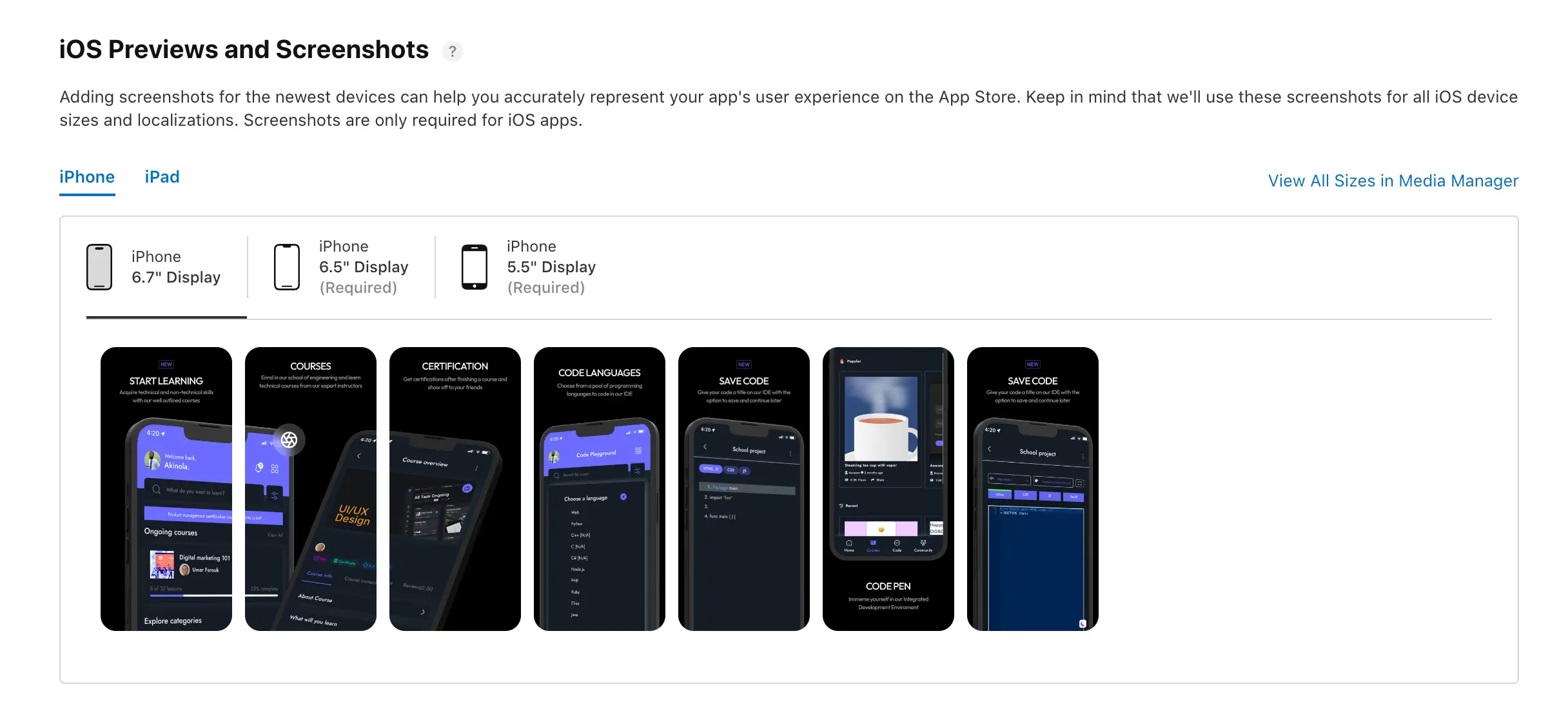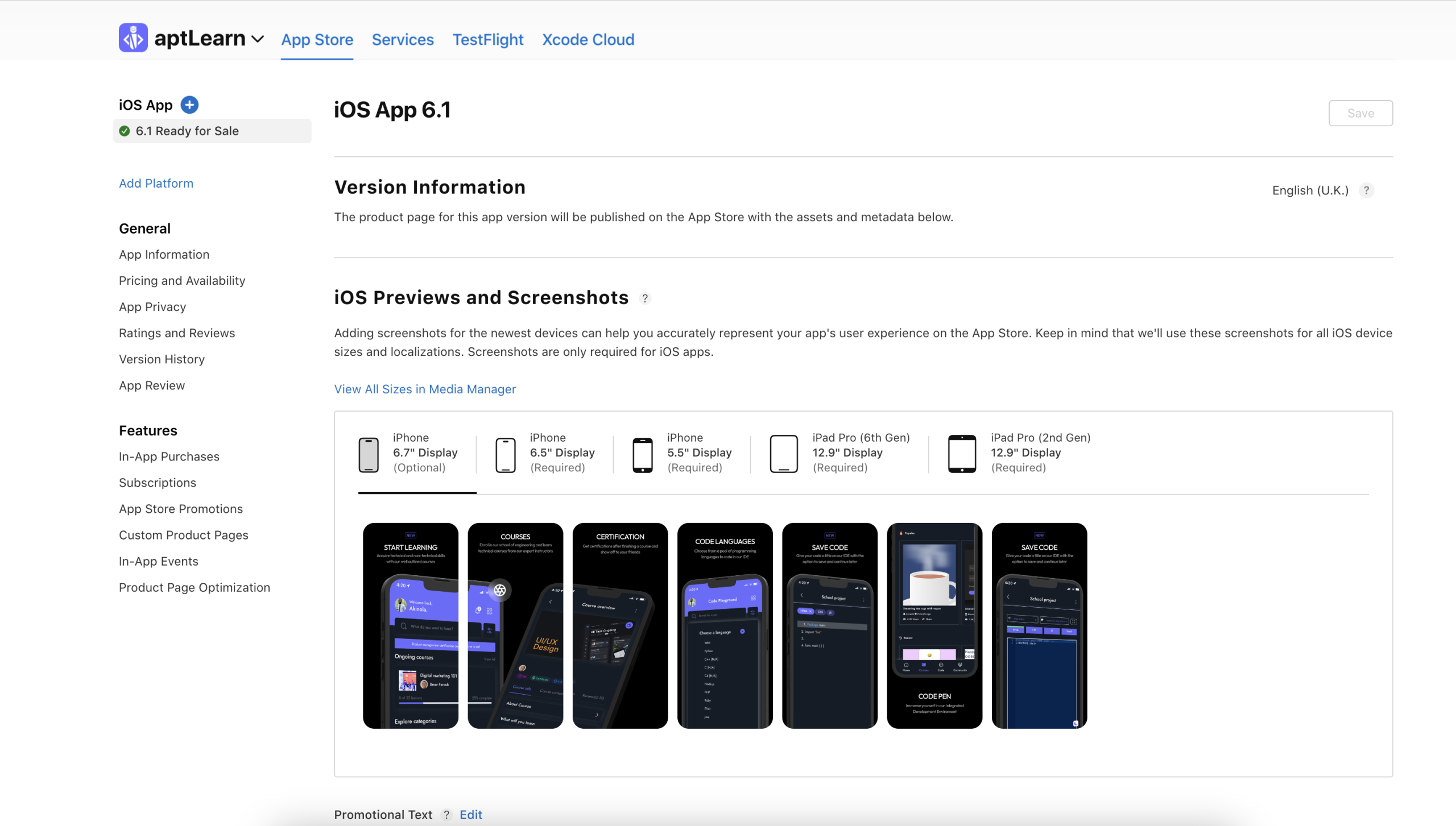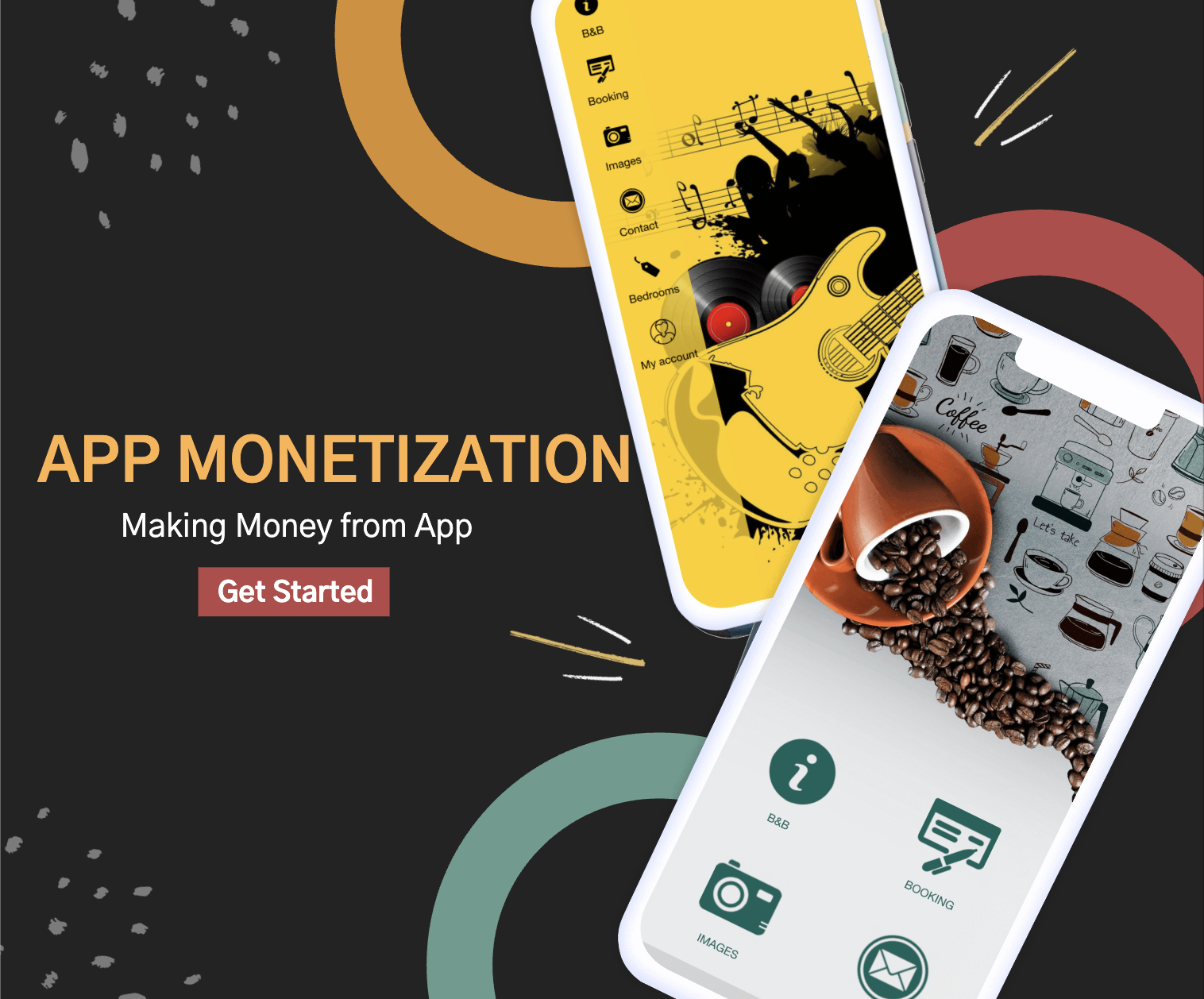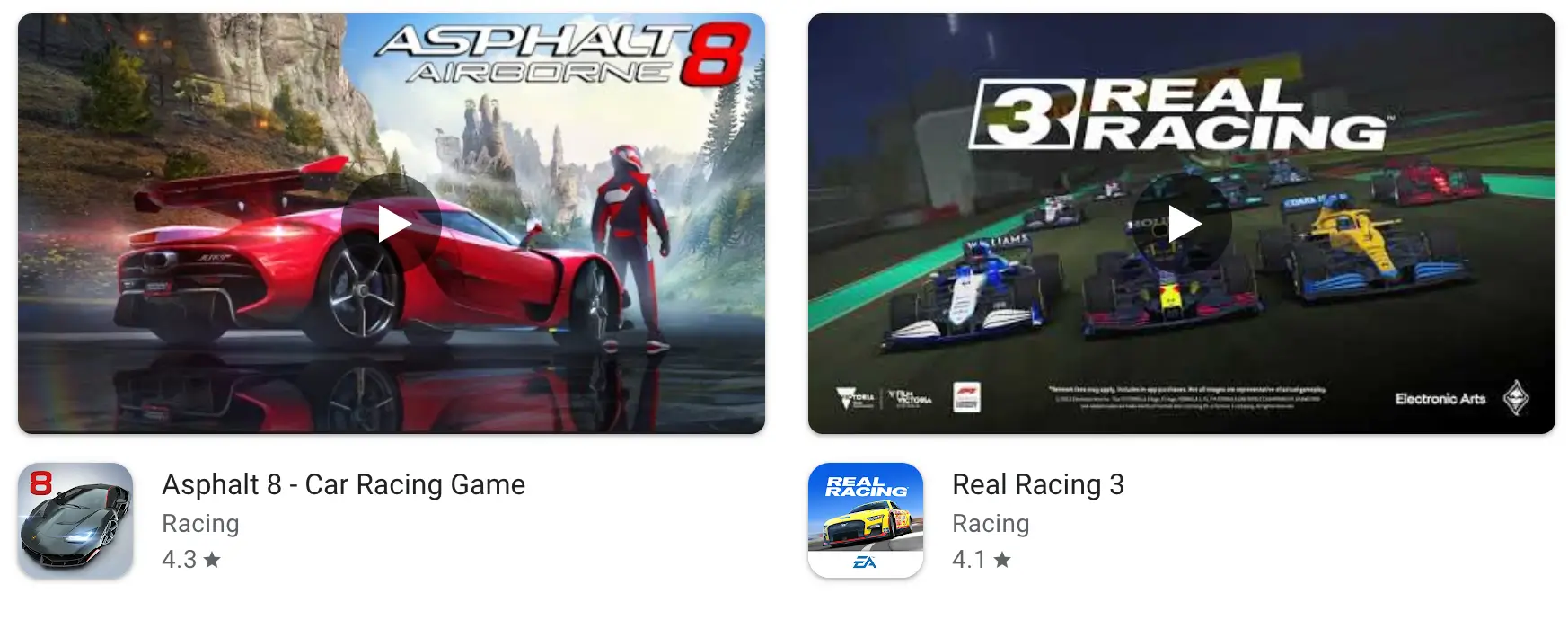You download a free mobile app, use it to your heart’s content, and never spend a dime. So how does the app maker generate revenue if they’re giving their product away for free? It’s a question many of us have pondered while tapping and swiping our way through various apps.
The truth is, most free apps make money in the background without you ever realizing it. App developers have clever and diversified ways of monetizing “free” apps to earn ongoing revenue.
👉🏾 Other Swiftspeed users also read: Powerful App Monetization Strategy To Earn More in 2025
We’re not just throwing theories at you; we’re backing them up with real-life examples, case studies, and hard-hitting facts. By the end of this blog, you’ll learn how mobile apps are created and monetized;
As reported by Allied Market Research, the mobile app industry is projected to skyrocket to a mind-boggling $777.4 billion by 2032. Interestingly, the lion’s share of this revenue comes from free apps. In fact, as of 2023, a staggering 97% of apps on the Google Play Store are free, according to Statista.
How Do Free Apps Make Money?
While you may not be forking over cash to use your favorite free app, the app creators are likely generating income through one or more of the following models:
How Free Apps Make Money Using Mobile Advertising
Advertising is one of the most common ways free apps generate revenue. There are several types of in-app advertising that allow developers to monetize their apps and keep them free for users:
Banner Ads

Banner ads are rectangular image or text ads that sit at the top or bottom of the screen. They are unintrusive and one of the most popular forms of in-app advertising. Banner ads allow developers to earn money every time a user views or clicks on the ad. Revenues are higher with clicks, so banner ads are designed to entice clicks while not being too annoying to users.
Video Ads

Video ads play a video advertisement before or during app content. They are more engaging than banner or interstitial ads since they contain audiovisual content, to create this type of engaging ads, ad makers often use video editing software to ensure high-performing visuals.. Video ads typically have higher payouts for developers but can irritate users if they are too long or frequent. Rewarded video ads that reward users for watching are a popular compromise, allowing users to opt-in in exchange for in-app rewards.
Native Ads

Native ads are designed to blend in with the app’s regular content and are often found in social media feeds or as recommended content. They are less intrusive and can offer a higher engagement rate, but they must be clearly marked as sponsored content to maintain user trust.
Interstitial Ads

Interstitial ads are full-screen ads that cover the interface of an app. They generally appear between screens or levels during natural breaks in the flow of an app. Interstitial ads have high viewability as they take up the entire screen, allowing developers to charge advertisers more money. However, they can be annoying to users if shown too frequently.
Notable Example
One notable success story in-app advertising is the game “Angry Birds.” The developer, Rovio Entertainment, utilized in-app banner ads strategically placed within the game interface. With millions of active users and a highly engaged audience, these unobtrusive banner ads generated substantial revenue for the company. The careful placement ensured that the ads didn’t disrupt the gaming experience, resulting in a win-win situation for both users and advertisers.
Most apps rely on ad networks like Google AdMob to serve ads. Ad networks provide app access to advertisers looking for targeted placement. The ad networks also provide analytics on performance.
A key element is using user data to target relevant ads. By collecting location, demographic, behavioral, and interest data, apps can create user profiles. These profiles allow advertisers to show users ads most likely to lead to engagement or purchases. This increases the app’s ad revenue.
Across-the-board, in-app advertising is a major monetization method for free apps seeking to maximize downloads while still generating revenue per user. Displaying relevant, engaging ads to the right users keeps the app free while bringing in steady ad income.
How Free Apps Make Money Using Affiliate Marketing
Affiliate marketing is another popular monetization model for free apps. In this model, the app publisher partners with other companies and earns a commission for promoting or selling their products and services within the app.
The free app essentially becomes an affiliate partner for other businesses. When users click on promoted content, links, or ads within the app, and subsequently make a purchase or complete an action like signing up for a service, the app publisher receives an affiliate fee or percentage of the sale.
For example, a retail shopping app may highlight certain products and contain direct links to the merchant’s website. If users click through and buy those items, the shopping app will earn an affiliate commission. Similarly, a travel app showing hotel or flight options may get paid when users book through their links.
Affiliate marketing creates a win-win partnership between apps and businesses. The companies being promoted gain exposure and customer acquisition through the app content and user base. Meanwhile, the app is able to monetize its platform without charging users. The more users the app has, the more potential affiliate activity it can drive.
How Free Apps Make Money Using The Freemium Model
A very common approach is the “freemium” model. The app is free to download and use, but “premium” features are limited or locked behind a paywall. Users can access these features through in-app purchases and subscriptions. This lets users sample the app for free before deciding if they want to pay to unlock the full experience. Many popular apps like Spotify use this method.
Many free apps use a freemium model where the app is free to download and use, but a premium version is available for purchase that unlocks additional features and functionality. The free version acts as a trial that gives users a taste of the app while limiting certain features that users will likely want over time. This provides an incentive for users to upgrade to the paid premium version to get the full experience.
👉🏾 Other Swiftspeed users also read: App Marketing Strategies to Increase App Downloads in 2025
Some common limitations of free app versions include:
- Restricted access to content (e.g., limited number of articles/videos per month)
- Limited usage per day/week/month
- Basic features only, with advanced features locked
- Ads that can be removed in the premium version
- Lack of customer support
The premium versions then provide benefits like:
- Unlimited usage and access to gated content
- Unlocking all advanced features
- Removal of ads
- Access to exclusive content
- Priority customer support
- Customizations and personalization
This allows developers to earn revenue from the subset of users who find enough value in the app to pay for premium features and an enhanced experience. It enables users to try before they buy rather than having to pay upfront. The trick is finding the right balance between limiting the free version enough to drive upgrades without limiting it so much that users lose interest.
Evernote, Swiftspeed as Freemium model example
You may feel we sneak ourselves here; of course, we use the freemium model; frankly, most successful companies do. We allow users to create an app without coding and publish it on the App Store and Google Play, but if they want to make money from their app, they have to upgrade, and then we will allow them to integrate with Google Admob or Facebook Audience Network for app monetization.
As for Evernote. You can jot down notes, set reminders, and even clip web pages—all for free. But the moment you want to turn your notes into a presentation or collaborate with your team, that’s when Evernote gently nudges you towards their premium plan. It’s like offering you a basic vanilla scoop and then saying, “How about some chocolate chips on that?”.
How Free Apps Make Money Using Subscription Model
One of the most popular ways free apps generate revenue is through in-app purchases. This involves offering premium features, items, or other digital goods for sale within the app that users can choose to purchase.
In-app purchases (IAPs) have become one of the most lucrative ways for free apps to generate revenue. With an in-app purchase model, the app is free to download initially but charges users for additional features or content within the app.
A popular form of IAP is the “freemium” model, where the app offers basic features for free but charges a premium for advanced functionality. For example, a free photo editing app may limit the number of filters available until the user pays to unlock the full suite of editing tools. This allows users to try the app first before committing to pay.
Developers are increasingly relying on in-app purchases as a revenue source. Some statistics show that IAPs account for over 90% of mobile app revenues. Games, in particular, derive a majority of income from in-app purchases of virtual goods, bonuses, character upgrades, and more. Subscription-based IAPs are also gaining popularity, where users pay a recurring fee for premium access.
Overall, in-app purchases allow developers to earn ongoing revenue from engaged users. By continually offering new compelling content and features to buy within the app, developers can monetize free apps successfully over the long term.
There are several variations on this:
- One-Time Purchases
Many free apps will let users make one-time purchases to unlock additional content or features. For example, a free game may let players buy special items, extra lives, or access to new levels. This allows the developers to earn money from users who find value in these extra features.
- Subscriptions
Rather than one-time purchases, some apps offer renewable subscriptions. For example, a language learning app could offer different subscription tiers that give access to more lessons, features, or other content for an ongoing monthly or annual fee. This creates recurring revenue.
Spotify and Headspace – In-App Subscription Case Study
Spotify is a good example of a successful subscription model. With its premium plan, you’re not just listening to music; you’re experiencing it ad-free, with the ability to download tracks and listen offline.
Headspace is another champ. It’s not just a meditation app; it’s your personal mindfulness coach. The subscription gives you access to a vast library of guided meditations that cover everything from stress and sleep to focus and relationships.
How Free Apps Make Money Through Sponsorship Model
Sponsorships are a great way for free apps to generate revenue. Many apps will allow companies to sponsor items, features, or events inside the app.
For example, a free gaming app could allow sponsors to pay to have branded items appear inside the game. When players collect or use those items, they essentially view an ad from the sponsor. Apps may also integrate sponsored challenges, levels, or competitions into the gameplay. There could be a “Coca-Cola Challenge Cup” tournament or a “Starbucks Scavenger Hunt” special event.
Sponsorships play a major role in monetizing free apps. This involves partnering with brands and advertisers to integrate their products or messaging into the app experience.
Some common forms of sponsorships in free apps include:
- Prominent branding – Apps may display banners, logos, or videos from sponsors in the app interface. Brands want visibility and association with popular apps.
- Sponsored items/levels – Apps like games offer custom sponsored levels, virtual goods, or bonuses unlocked by watching a video ad or engaging with a brand. The sponsor covers development costs in exchange for exposure.
- Sponsored content – Apps may publish articles, videos, or tutorials that are paid for by a sponsor. These help monetize informational and media apps through native advertising.
- Rewarded interactions – Apps reward users with in-app currency or benefits for engaging with sponsor content or ads. This captures attention for brands in a subtle way.
- Event sponsorship – App contests, live streams, or virtual events can be sponsored by brands seeking exposure to the app’s audience.
The benefit of sponsorships for apps is they provide revenue without compromising user experience. As long as the branding and messaging align with the app’s audience, sponsorships can effectively monetize free apps through subtle integration.
Sponsorships work best when they add value for users instead of distracting from the app experience. Integrating sponsored items and events into native app features creates a natural win-win experience.
Sponsorship Model Using Real-World Examples
Take the fitness app MyFitnessPal, which has partnered with Under Armour to offer users premium features like personalized training plans and diet tracking. It’s a match made in heaven that benefits both parties.
Or consider the collaboration between the meditation app Calm and American Express. Cardholders get exclusive access to premium content, adding value to the American Express brand while providing Calm with a new revenue stream.
How Free Apps Make Money Through Cryptocurrencies Model
Cryptocurrencies like Bitcoin and Ethereum are becoming increasingly popular, providing app developers with new monetization opportunities. Some apps reward users with tiny amounts of cryptocurrency for engaging with the app. This lets users earn small amounts of crypto just for using the app as normal, serving as an incentive to keep them coming back.
Apps are also allowing users to send microtips to content creators in cryptocurrency. Instead of traditional donations, fans can show appreciation and support by tipping just a few cents worth of crypto. This streamlined digital tipping experience provides a new way for creators to monetize their fans. Earning tips in crypto gives creators an easy entry point into decentralized digital currencies.
Cryptocurrency rewards and tipping features present innovative methods for apps to generate revenue. They please users by letting them earn or transfer digital assets just through normal app use. And they open up new income streams for app developers and creators. As cryptocurrencies penetrate the mainstream, expect to see more apps experimenting with crypto-based monetization models as an alternative to ads or in-app purchases.
How Free Apps Make Money By Licensing Content and Data
Many free apps make money by licensing their content, brand, or user data to third parties. Apps that produce unique content like games, photos, videos, audio, and more can license that content for use in other media. For example, a popular free photo editing app could license user-generated images to stock photo companies.
Licensing branded content is another approach. Apps with a strong brand identity can license their brand, characters, and other intellectual property for merchandise, movies, TV shows, toys, and more. Angry Birds is a prime example, having licensed their brand across many different products and formats after the success of their free mobile game app.
Finally, some free apps monetize by licensing user data, such as demographic info, usage data, purchasing history, etc. With user consent, apps can sell data to market research firms, data brokers, advertisers, and other companies interested in understanding consumer behavior. However, licensing user data raises privacy concerns and requires transparency in an app’s terms of service.
How Free Apps Make Money By Selling Physical Goods
Many free apps partner with manufacturers to sell branded physical products through their apps. For example, a photo editing app could sell custom prints, photo books, calendars, mugs, and other photo-related merchandise. An app focused on health and fitness could sell branded athletic apparel, water bottles, workout equipment, supplements, etc.
For example, a food delivery app like DoorDash or Uber Eats allows users to browse menus, customize orders, and pay for food deliveries all without leaving the app. The app charges restaurants a commission fee on every order. So while the app is free for users, it generates revenue from each transaction.
Ecommerce apps like Wish and Amazon also enable free in-app shopping. Users can browse products, add them to a cart, and checkout just like on a website. The app then takes a cut of each purchase made. So again, the app is free, but the developer earns money on the backend from sales.
The main appeal of ordering physical goods through apps is convenience. It’s quicker and easier for users than visiting separate websites or making phone calls. By handling billing and delivery inside one centralized app, the process is streamlined.
So for apps focused on physical goods, in-app transactions are the primary revenue generator. The app itself may be free, but developers still earn a percentage every time users order products or food deliveries within the app. This creates a steady revenue stream while keeping the app accessible to the widest user base.
👉🏾 Other Swiftspeed users also read: How to Increase Your App Installs
How Free Apps Make Money By Selling User Data
Mobile apps provide a wealth of data that companies can use for targeted advertising and improving user experiences. When users download and engage with free apps, they usually have to create accounts and grant access to their data. Apps can then track users’ in-app browsing and purchasing behavior, location, usage habits, demographic data, and more.
Apps require access to user data like contacts, photos, camera, microphone, etc, to function properly. But beyond these basic permissions, apps can glean a lot of valuable data:
- Demographic info such as age, gender, income, education level, marital status etc. This allows segmentation for targeted ads.
- Location data via GPS and IP addresses. This enables location-based targeted advertising.
- Usage data like usage times, frequency, and duration. This info helps optimize user experiences.
- In-app browsing and purchase history will inform personalized recommendations.
- Contacts and friends network for tracking social connections and targeting ads.
App developers can monetize this data by allowing third-party data brokers, market research firms, or analytics companies access to it for a fee. These companies use the data to derive insights into consumer trends and build better ad targeting models.
For example, an app that recommends movies to users based on their viewing history will accumulate data on what types of movies different user segments like. The app can sell this data to a film studio looking to promote an upcoming release to the right target audience.
Data monetization provides a revenue stream to app developers while maintaining an app’s freeness and accessibility to users. Reputable apps anonymize data to avoid jeopardizing user privacy. However, many users are still uneasy about their data being shared with third parties. Developing trusted data practices and allowing users control over their data-sharing preferences is important for gaining user trust.
Best Tools to Make Money From Free Apps for Developers
Before you integrate with any of the mentioned means of monetization, you first need an app; lucky for you, you can create an app for free on Swiftspeed App Builder without writing a single line of code.
Make an app with Swiftspeed App Builder
Create premium apps without writing a single line of code, thanks to our user-friendly app builder. Build an app for your website or business with ease.
When it comes to monetizing free apps, utilizing the right tools and platforms can significantly enhance your revenue generation. Here are some useful tools and platforms that can help app owners effectively monetize their free apps:
1. Vungle: Vungle is a leading mobile ad network specializing in high-quality video ads. It offers various ad options, including rewarded videos, playable ads, and interstitials. By integrating Vungle into your app, you can monetize through engaging video advertisements that provide value to your users.
2. AdMob: Created by Google, AdMob is a popular mobile ad network that allows app owners to monetize through various ad formats, such as banner ads and native ads. AdMob offers advanced targeting options and optimization tools to maximize revenue from in-app advertising.
3. Chartboost: Chartboost is a powerful monetization platform focusing on mobile game apps. It provides a suite of tools and services to enhance game discovery, increase user engagement, and boost ad revenue. With Chartboost, app owners can benefit from interstitial and rewarded video ads tailored to the gaming audience.
4. InMobi: InMobi is a global mobile ad network that offers innovative advertising solutions, including native ads, video ads, and interstitial ads. Their advanced targeting capabilities help deliver highly relevant ads to your app users, leading to improved user engagement and monetization.
5. Facebook Audience Network: As a leading social media platform, Facebook offers the Audience Network, which enables app owners to monetize their apps with Facebook’s high-quality ad inventory. You can leverage personalized and engaging ads to generate revenue by integrating the Facebook Audience Network SDK.
These tools and platforms provide app owners with the necessary resources to optimize monetization and maximize revenue from free apps. Utilizing these solutions can effectively monetize your app while providing a seamless user experience. Remember to choose the tools that align with your app’s niche, target audience, and overall monetization strategy for the best results.
👉🏾 Other Swiftspeed users also read: Powerful App Monetization Strategy To Earn More in 2025
Final Words
Free apps have revolutionized the app ecosystem by lowering barriers to entry and allowing more people to access useful tools and games. However, apps still need revenue streams in order to sustain development. We’ve covered some of the most common monetization models that free apps utilize:
- Advertising – Displaying banner, interstitial, and video ads within the app interface. Ads can be served through networks like AdMob or individual sponsorships.
- In-app purchases – Selling premium features, cosmetics, coins, or other digital goods. Allows monetizing the most engaged users.
- Affiliate marketing – Earning commission for leading users to purchase physical products or sign up for other apps and services. Requires strategic partnerships.
- Sponsorships – Securing exclusive branding, product placement or promotions from an individual brand within the app experience.
- Data monetization – Analyzing usage analytics or other data collected from users, and selling aggregated reports to third parties. Requires careful data and privacy practices.
- Freemium upsell – Offering a free limited version alongside a premium paid version with more features or fewer restrictions. Allows wide distribution with monetization of most invested users.
- Physical goods – Selling real-world merchandise related to the app, like toys or clothing. Leverages the app’s intellectual property.
- Cryptocurrencies – Rewarding users with app-specific digital tokens or currencies powered by blockchain. Still an emerging model.
The key is finding the right blend of monetization strategies for each unique app and target audience. There is no one-size-fits-all approach. With careful testing and iteration, developers can unlock sustainable revenue streams while maintaining a quality user experience.




